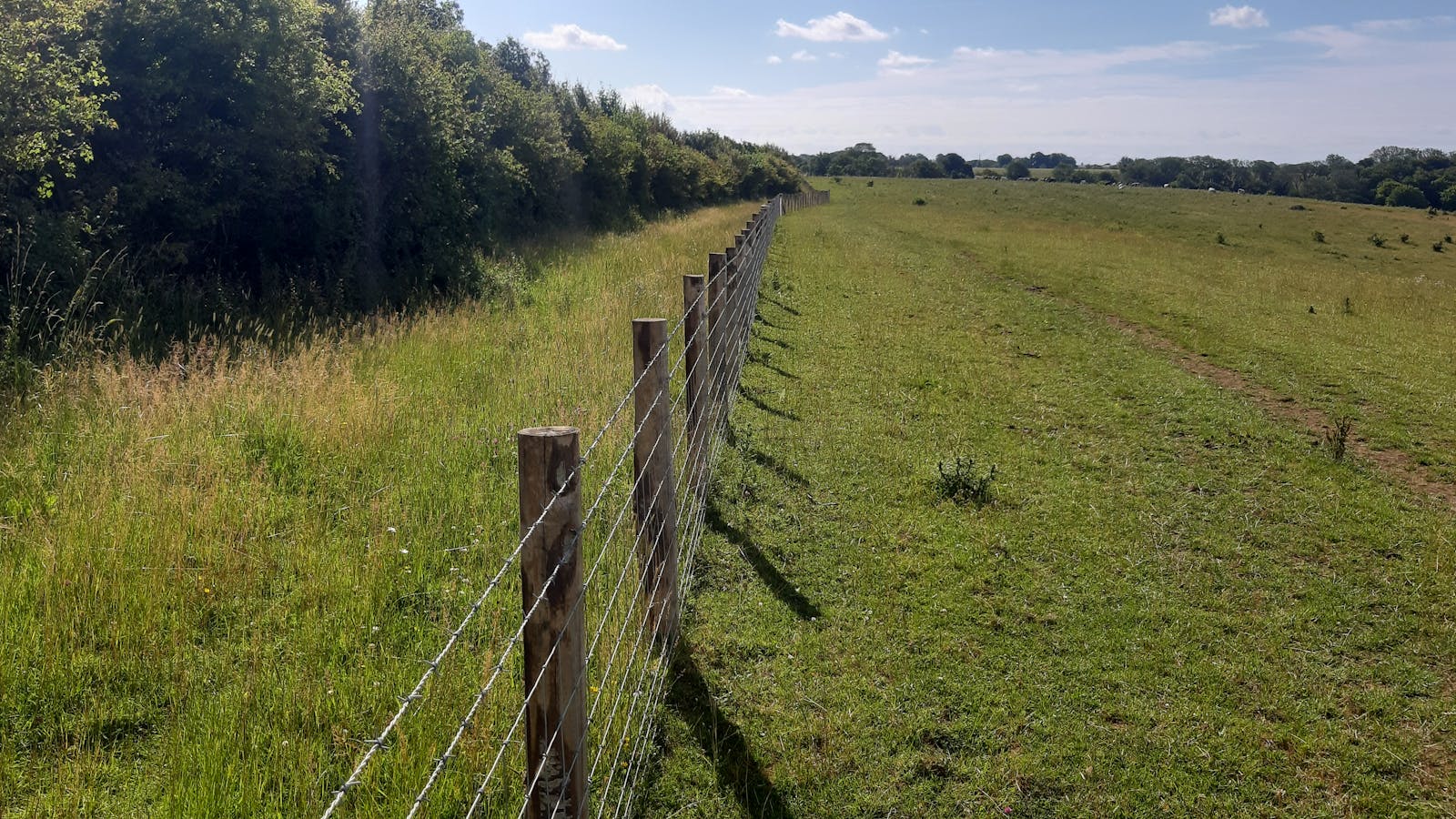
Lydden Temple Ewell BNG offset site
Local Planning Authority: Dover
National Character Area: North Downs
OS grid ref: TR 27740 44974
Postcode: CT15 7EP
What3words: ///pasta.lifts.mole
Habitat units available - Surveyed 2024
A total of 5.587 habitat units and 1.250 hedgerow units are available from the following habitat types:
Grassland
Lowland calcareous grassland (High distinctiveness) - 3.656 units
Heathland and Shrub
Mixed scrub (Medium distinctiveness) - 1.930 units
Hedgerow
Species-rich native hedgerow - 1.220 units
Line of trees - 0.030 units
Site description
Lydden Temple is a 4.42 hectare site located approximately 4km west of Dover, between the villages of Whitfield and Template Ewell.
The site is adjacent to Lydden Template, Ewell – a Kent Wildlife Trust nature reserve which contains the Lydden and Temple Ewell Downs of Special Scientific Interest (SSSI). There are 3 patches of Ancient and semi-natural woodland within a 1km radius of the site. The site is a stones throw away from the only area which supports the highly vulnerable Warbiter cricket.
Current habitats on the site include other calcareous grassland, other neutral grassland, and mixed scrub. In addition, the site contains 0.03km of line of trees.
A species-rich native hedgerow will be created on site.
Other habitats on site (other calcareous grassland, mixed scrub and line of trees) will be enhanced to a better condition through sensitive management practices, with other neutral grassland being enhanced to other calcareous grassland. These changes will benefit a range of local conservation priorities such as uplifting grassland areas and improving invertebrate diversity, species such as fragrant and pyramidal orchids should appear, along with kidney and horseshoe vetch establishing with the hope to support a breeding population of Adonis Blue and Chalkhill blue butterflies.
Wider environmental benefits will include pollination services.
Publicly accessible routes are within close proximate to the site.
Fill out a form at the bottom of this page or email your development's BNG metric to bngenquiries@adonisblue.org.uk for a free BNG consultation.
These units are valid for a maximum of two years, provided site conditions do not significantly change. If more than two years have lapsed between the site survey and habitat works being undertaken, an updated survey will be necessary to ensure recommendations remain valid.

Habitat Transitions


Site Photos




